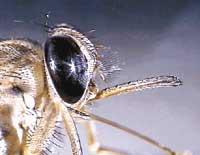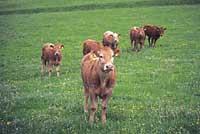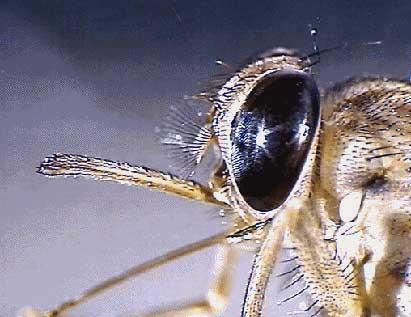Chain reaction
2001/05/13 Carton Virto, Eider - Elhuyar Zientzia
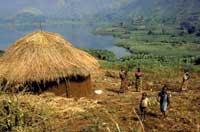
It all began in 1887. A group of Italian soldiers embarked, as usual, on exploration tasks by the horn of Africa. The soldiers did not go far, but it is believed that the cattle they carried with them introduced in the continent a disease hitherto unknown in Africa, the cow epidemic. At that time the cow epidemic was endemic in the Asian steppes and spread periodically to Europe, along with cattle moving from side to side in military campaigns. In sub-Saharan Africa, however, the disease was unknown in the 19th century. Until the end of the 20th century, the virus does not contaminate camels and they were probably the only animals that crossed the desert.
But in 1887 the disease appeared in Eritrea, specifically in the region where the Italians were. In 1888 it was located in Ethiopia and, to the south, it spread following the oxen through the Rift valley and to the west, by Sudan and Chad. Five years later, the disease reached the Atlantic coast and a decade was enough to reach South Africa. On the way he killed 90% of the cattle in Africa and other wild animals: buffalo, elk, wild pigs, etc. Only 5.5 million heads of livestock were lost in South Africa and in Central Africa, around the Victoria Lagoon, over a year from 400,000 heads to 20,000.
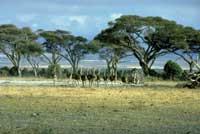
It is said that the pandemic is the most serious natural disaster that has ever occurred in Africa and, of course, not only affected animals, hunger was widespread. The life and food of many African tribes were cows and the epidemic destroyed their way of life. Without cattle, how could social systems based on livestock last almost exclusively? In Rwanda, Burundi, Angola, Uganda, many died hungry and those who did not die were killed by wars to seize the few cows that survived.
According to historical writings, there was a massacre among the massages in Kenya. An Austrian explorer who crossed Tanzania in 1891 wrote "Rinderpest has lost life in two-thirds of massages." The social system has been destroyed, the aristocracy has sunk and the people are hungry. It was the time of explorers, conquest, colonialism and little resistant.
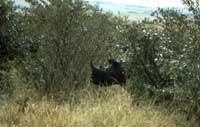
The cow epidemic favored the European conquerors and became owners of Africa without just firing. A soldier who participated in that conquest stated that "since the pastoral tribes were so powerful and warriors, without the visit of this terrible plague the arrival of the Europeans would not have been so peaceful."
The tse-tse mosquito infects trypanosomiasis (sleep disease), a deadly disease for both cattle and men. Today, after AIDS, it is Africa's most widespread disease and an obvious obstacle to the continent's development. She loves areas with abundant vegetation, since the mature flies leave the eggs between brambles. The red cows that populated the African campas held the grass short and the tse-tse fly was limited to certain places until the cow plague appeared. In the beginning, with the sacrifice of the cows the disease fell back when the means with which it spread died.
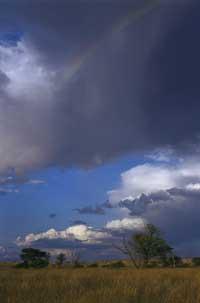
But without cattle, vegetation grew and the population of wild animals recovered faster than cattle. In an ideal situation for the Tse-tse fly, sleep disease spread rapidly and took root in regions that had hitherto been almost out of danger. After the cow epidemic, the unrecovered population experienced a new catastrophe.
A century has passed since then, but Africa has not yet awakened from that nightmare. Half a million people suffer from sleep every year in Africa and nearly 100,000 die. The Tse-tse fly is the biggest obstacle to economic development in many regions of Africa and does not seem to recede rapidly. Due to the Tse-tse fly, various institutions have been shown against protected reserves in Africa, where a type of vegetation is being promoted that guarantees the survival of the fly by prohibiting livestock. Many conservation organizations and XX. The Europeans of the twentieth century argue that the African landscape considered as its own is not so old and claim the naturalness of the landscape modeled by livestock.
Main pests affecting animals
Rinderpest. It is the oldest epidemic that affects cattle and has caused the most misfortunes throughout history. In the decade 376-386 d. C. was first known this disease that contaminates cattle and, in general, the nicknamed animal. It is transmitted by contact and is almost always deadly. XVIII. Throughout the nineteenth century 200 million cattle heads died in Europe. Since the nineteenth century no continent is exempt from disease. The epidemic that conquered Africa in the 1890s is the most unfortunate witness.
However, the cow epidemic has also been one of the main veterinary drivers, as the first European veterinary school opened in 1762 in Lyon following a cow epidemic. In the 1950s, veterinarian Walter Plowright synthesized the bovine pest vaccine and since then the disease has regressed greatly. Currently it is limited to a few nuclei of Africa, the Middle East and Asia and a project launched by the UN FAO for Agriculture and Food aims to eradicate the rinderpest of the world in 2010.
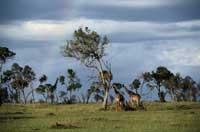
The goat. Goat is a very contagious disease that affects animals that have pruning divided into two. Except for puppies, it is not always deadly, but it generates huge economic losses. Because of its contagious nature, it limits international trade in animals and their derivatives, which has occurred in the United Kingdom.
It only appeared in some places in Africa, Asia and South America and was thought to be totally removed from Europe, but the events of recent months have shown otherwise.
Epidemic of small ruminants. It is a disease similar to the cow epidemic, but it affects sheep and goats. This is almost always deadly. Although first detected in West Africa, it currently also appears elsewhere in Africa, the Middle East and India. In India, precisely, it is expanding very quickly lately.
Bovine pleuropneumonia. It is a chronic respiratory tract disease that attacks cattle and other large ruminants. It greatly weakens and often causes death. The disease easily dissipates by transporting infected but symptomless animals and, although it has disappeared in many parts of the world, it is recovering in some places in Africa and in many others that have been clean for decades (East Africa, Media and South Africa).
Fever in the Rift Valley. It affects ruminants and especially sheep. It is transmitted by mosquitoes and is very harmful. In some places in Africa it is endemic, but when the climate situation is favourable it extends a lot. They abort animals with breeding and kill almost all the young specimens that contaminate them. If transmitted to humans, it causes a serious, even deadly, flu-like illness. At the moment it is limited to certain regions, but it shows a great capacity for expansion to other countries and continents.
Published in the supplement Natura de Gara.

Gai honi buruzko eduki gehiago
Elhuyarrek garatutako teknologia




